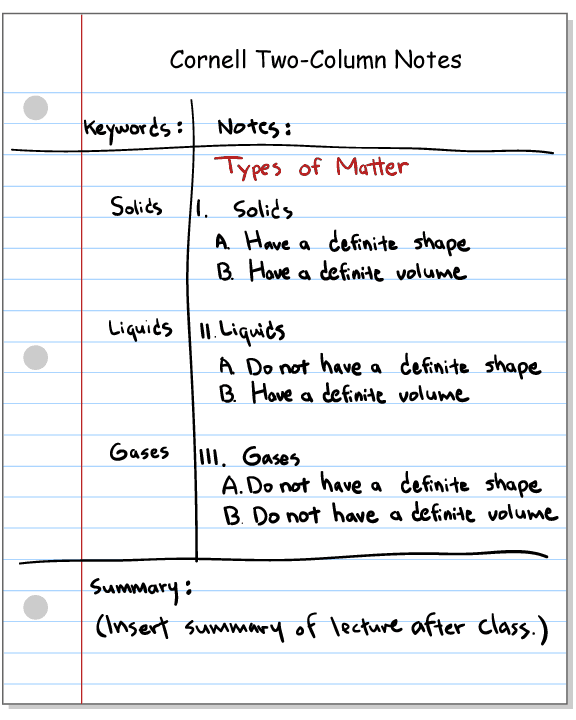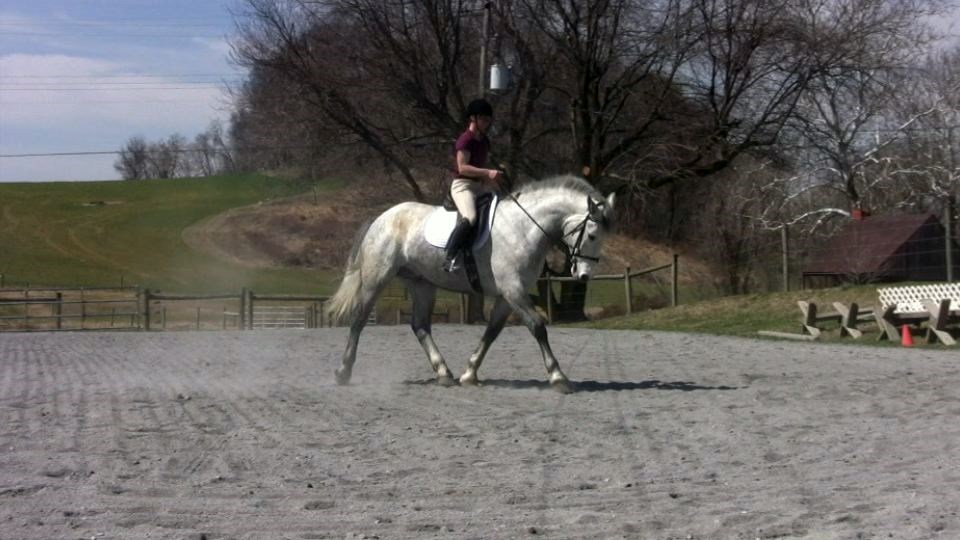
Image source: https://info.examtime.com/files/2014/10/note-taking-strategies.gif
I advocate a different approach. Rather than try to teach a 'perfect' way to take notes, I suggest a format that leads to reviewing those notes systematically. For this I choose to recommend a format for note taking that leads to a robust review of those notes.
The Cornell Note Taking Format
I have written about Cornell note taking before. The thing is that Cornell is not a way to take notes, rather it is a format for taking notes your way. There are three aspects to Cornell Notes. 1) The notes; 2) the memory Cues; and, 3) the summary. Each section plays an important role in systematic review but more on that later.
The Notes
The largest segment of a Cornell note taking form is for taking notes your way. Here you take notes in the way that is most comfortable for you.
The Memory Cues
To the left of the notes section is an area for writing down memory cues including, main ideas, questions and vocabulary. Here your task is quite simple. Take a knife to your notes and carve out five to seven cues that will trigger your memory of the whole. Be concise yet thorough.
The Summary
At the bottom of the page is a small area for summary. Here you write a two to three sentence summary of what the whole page is about. Complete sentences please. Again, try to be concise yet thorough as well.
The Systematic Review Approach
In the title of this article I asked the question, "What good is note taking without a review plan?" The key to making your notes useful as a study tool is to have a specific review plan in mind before you take the notes in the first place. Cornell notes make review an integral part of the notes themselves.
The Summary
When reviewing your notes, the first step is to read the summary. If you can honestly say you understand what the entire page is about then you may move on to the next page.
The Cues
If, for some reason, the summary does not trigger a 'total recall' then move backward through the notes to the cues. Review the main ideas, the questions you have and the vocabulary. If this part of the process triggers your recall then you may move on to the next page of notes.
The Notes
The newer the notes, the more likely you are to reach this level. If reading the summary and the cues do not trigger a 'total recall' then re-read your notes with the summary and cues in mind. Do this once then move to the next page of notes.
Repeat
Each day, except for Saturday and Sunday, start at the beginning of your class or reading notes and start the review process all over again. As you start you'll find more and more that you'll be able to move on quite fast by reading the summary only. Later on as the notes get thicker, you'll find that you might need the cues. The more recent notes may require all three steps to the review.
The Last Words
So there you have it, a systematic way to review notes which will almost guarantee academic success. I say 'almost' because I cannot do the work for you. You must take a stance of being totally honest in your assessment of your understanding. You must commit to following the plan for review. Do these two things as you review your notes and I am certain you'll experience success.
_______________
Dr. Roger Lewis is the owner of Effective Study Tips where he introduces parents and their children to the most effective study habits we know of. Dr. Lewis is a career educator teaching in both middle-school settings and in university departments of education. His specialty is in the teaching of reading methods for k-12 students. He is now retired concentrating on sharing his knowledge with a broader audience.









